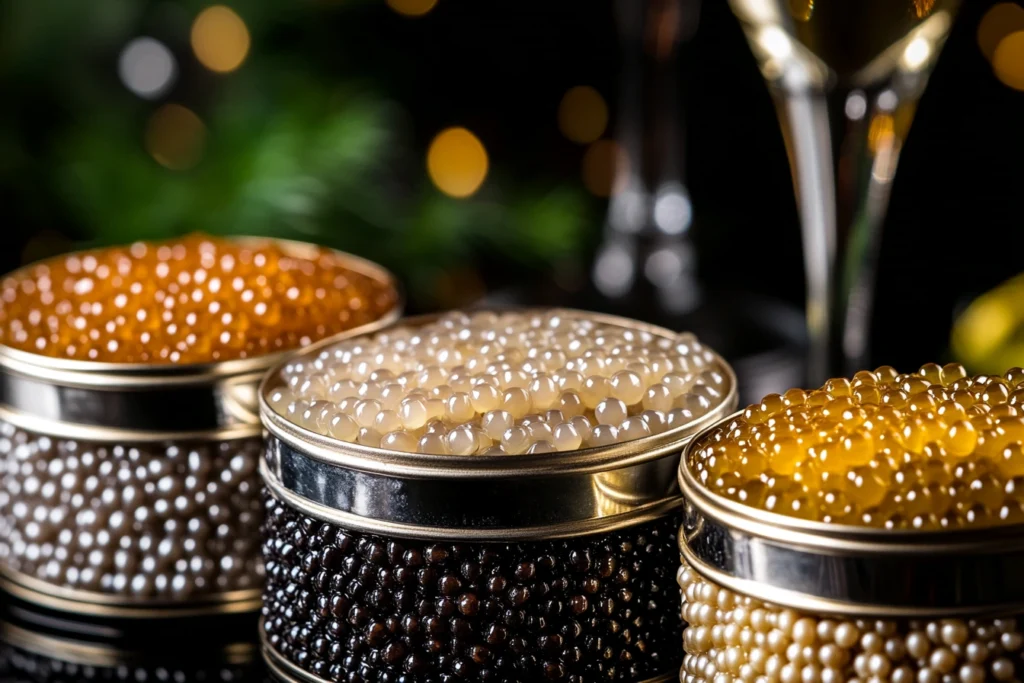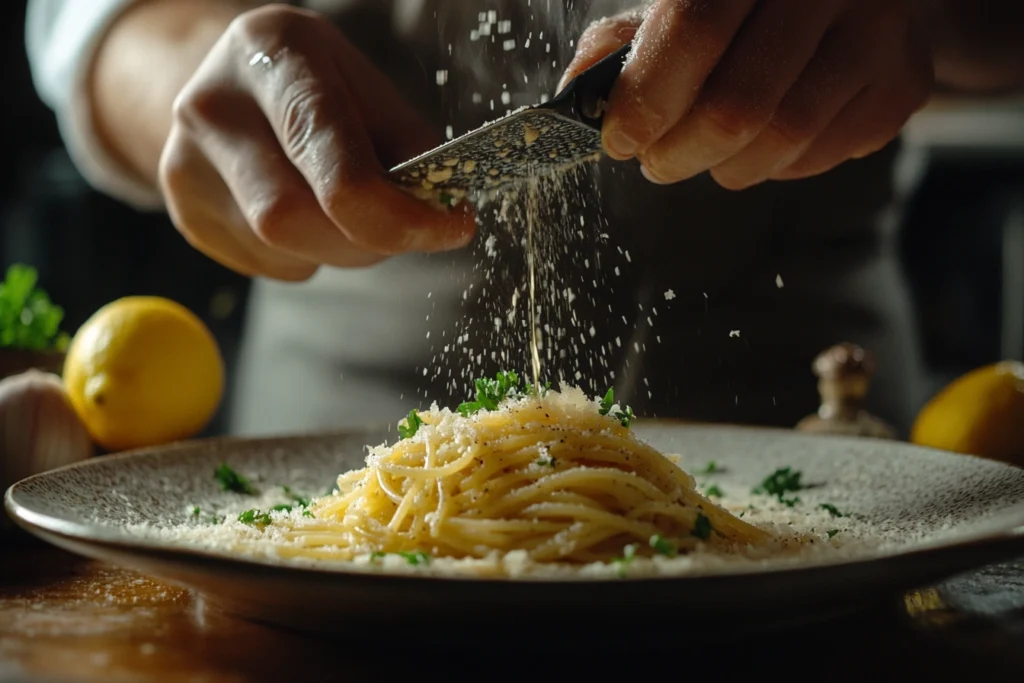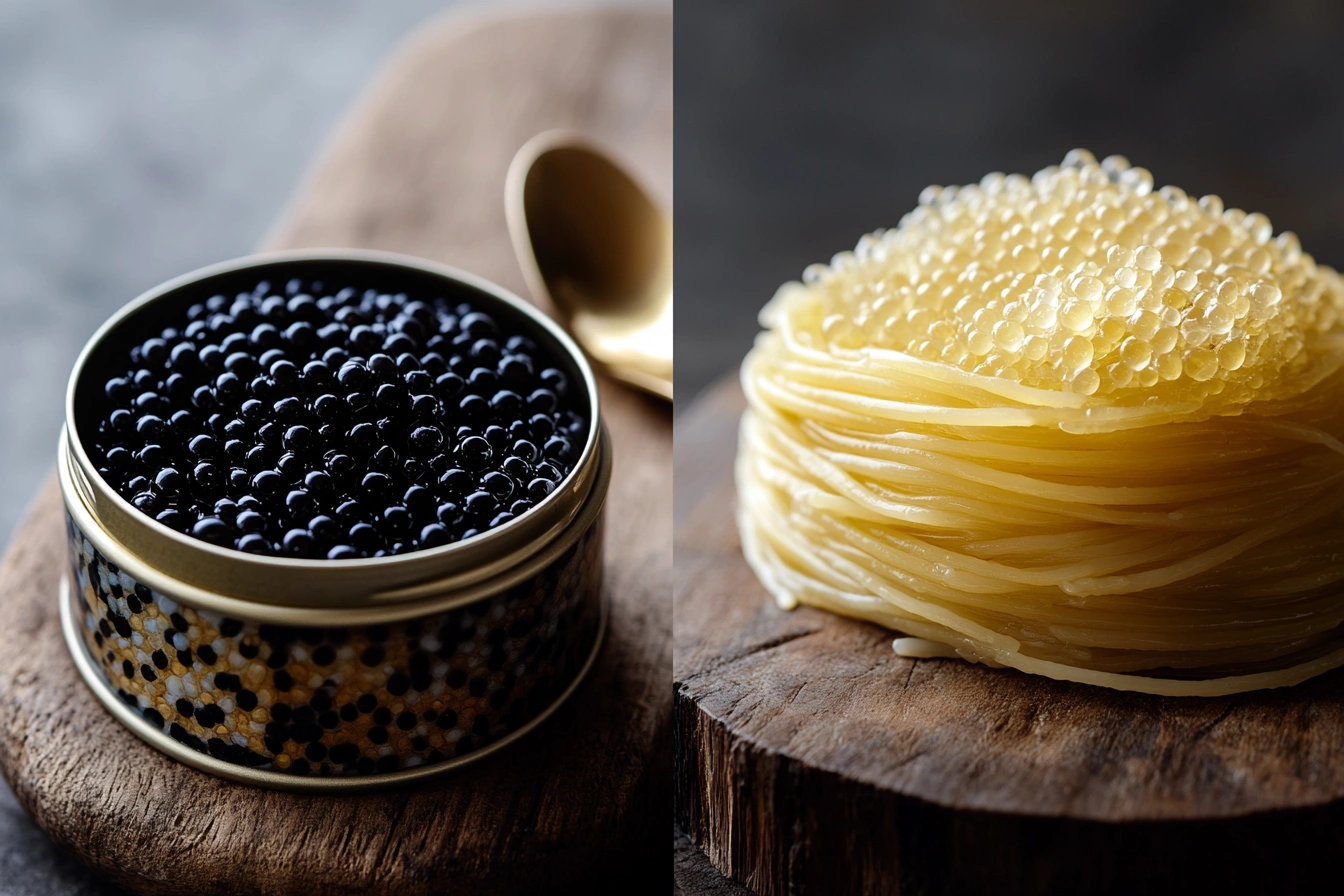Seafood delicacies like caviar and bottarga have long been associated with luxury dining, but many people confuse the two. While both come from fish roe, they have different textures, flavors, and preparation methods.
So, what is the difference between caviar and bottarga? The main distinction lies in their processing: caviar is salted, fresh fish roe, often from sturgeon, while bottarga is cured and dried fish roe, typically from mullet or tuna. These differences affect their taste, texture, and culinary uses.
In this article, we’ll explore:
- The origins and history of caviar and bottarga.
- How their flavors and textures compare.
- The best ways to enjoy each delicacy.
- Common misconceptions and frequently asked questions.
Let’s dive into the fascinating world of fish roe delicacies and uncover the true difference between caviar and bottarga!
Introduction to Caviar and Bottarga
What Are Caviar and Bottarga?
At first glance, caviar and bottarga may seem similar since both are derived from fish eggs, but they are prepared and consumed differently.
- Caviar refers to the salted, unfertilized roe of sturgeon fish, typically sourced from Beluga, Osetra, Sevruga, or Kaluga sturgeon. This fresh, delicate delicacy is known for its soft, bursting texture and briny, buttery taste.
- Bottarga, on the other hand, is cured and dried roe, most commonly from grey mullet or bluefin tuna. It undergoes a salting, pressing, and air-drying process, resulting in a firm, umami-rich product that is often grated or sliced over dishes.
Both are highly prized in gourmet cuisine, yet their flavors, textures, and uses are vastly different.
Why People Confuse Caviar and Bottarga
Many people assume that all fish roe is the same, but the difference between caviar and bottarga is significant. Here’s why they often get mixed up:
- Both are considered seafood delicacies and are often associated with luxury dining.
- They originate from fish eggs, but the fish species and preparation methods differ.
- Both enhance dishes with a rich, briny depth, making them popular among chefs and food lovers.
Understanding their unique characteristics will help you appreciate each delicacy for its distinct qualities!
Understanding Caviar – Types, Taste & Uses
What is Caviar?
Caviar ranks among the world’s most luxurious seafood delicacies. But what is the difference between caviar and bottarga? Unlike bottarga, which producers dry and cure, caviar consists of fresh, salted fish roe, typically harvested from sturgeon species.
For centuries, people have cherished caviar, with Russian and Persian aristocrats in the Caspian and Black Sea regions elevating it to a symbol of wealth and prestige. Today, it remains a gourmet ingredient in fine dining worldwide.
Types of Caviar & Their Unique Flavors
Not all caviar is the same! Here are some of the most sought-after types of caviar:
- Beluga Caviar – The most expensive and rare, with large, buttery, soft pearls and a delicate nutty flavor.
- Osetra Caviar – Medium-sized, golden brown pearls with a rich, briny taste and a hint of walnut.
- Sevruga Caviar – Smaller, crisper pearls with a stronger oceanic flavor, popular for its intense saltiness.
- Kaluga Caviar – A sustainable alternative to Beluga, offering large, smooth pearls with a mild, creamy taste.
How Caviar is Used in Cooking
Because of its delicate texture and rich flavor, caviar is typically served raw and cold. Here are some of the best ways to enjoy it:
- On blinis or toast points, paired with crème fraîche.
- As a luxurious sushi topping, adding a burst of umami flavor.
- Over scrambled eggs or pasta, enhancing simple dishes with elegance.
- Paired with champagne or vodka, complementing its briny taste with crisp, bubbly contrast.
While caviar is a symbol of sophistication, its fresh and delicate nature makes it vastly different from bottarga, which is firm and intensely salty.

Understanding Bottarga – Varieties & Uses
What is Bottarga?
Unlike caviar, which remains fresh and wet, producers cure and dry bottarga, traditionally using grey mullet or tuna roe. They often press it into a solid block or grate it like Parmesan cheese over dishes.
Bottarga has deep Mediterranean roots, with Italy, Greece, and Japan each having their own version of this umami-packed delicacy.
Types of Bottarga & How They Differ
- Mullet Bottarga (Bottarga di Muggine) – A golden-orange block of dried fish roe, with a mild, nutty taste.
- Tuna Bottarga (Bottarga di Tonno) – A darker, stronger-tasting version, often used in bold-flavored seafood dishes.
- Karasumi (Japanese Bottarga) – Made from mullet roe, but with a softer texture and subtle sweetness.
How Bottarga is Used in Cooking
Since bottarga is firm and salty, it’s often shaved, sliced, or grated over food rather than eaten on its own. Some of the most popular ways to enjoy bottarga include:
- Grated over pasta dishes like spaghetti alla bottarga, adding a rich, umami-packed punch.
- Shaved onto salads and bread, paired with olive oil and lemon juice.
- Used in seafood stews and sauces, enhancing the dish with intense oceanic flavor.
Because producers dry and preserve bottarga, it lasts much longer than caviar, making storage and use more convenient over time.

Key Differences Between Caviar and Bottarga
Now that we understand what caviar and bottarga are, let’s break down their key differences. Many people ask, what is the difference between caviar and bottarga? The answer lies in their preparation, taste, texture, and culinary uses.
Processing & Preservation
One of the biggest differences between caviar and bottarga lies in how producers process them:
- Producers keep caviar fresh and wet, salt-curing the fish roe, typically from sturgeon. They store it refrigerated and serve it raw.
- They cure, press, and dry bottarga, often shaping it into a solid block or selling it as pre-grated fish roe.
Because producers preserve bottarga through curing, it lasts for months without losing its flavor, whereas caviar has a much shorter shelf life.
Flavor & Texture Comparison
Both delicacies are savory and seafood-forward, but their textures and flavors set them apart:
- Caviar: Soft, delicate, and bursting with a buttery, briny taste. The eggs pop in your mouth, releasing their mildly salty oceanic essence.
- Bottarga: Firm, dry, and intensely umami-rich, with a hint of nuttiness and a slightly bitter aftertaste. It has a chewy or crumbly texture when sliced or grated.
If you prefer a smooth, melt-in-your-mouth experience, caviar is the better choice. If you enjoy bold, concentrated flavors, bottarga delivers a more intense seafood kick.
Price & Availability
- Caviar is far more expensive than bottarga, primarily because sturgeon roe takes years to mature, and sustainable harvesting is limited. Some of the rarest caviars, like Beluga caviar, can cost thousands of dollars per kilogram.
- Bottarga is more affordable and widely available, as it comes from mullet or tuna, which are easier to farm and harvest. It is a staple in Mediterranean cuisine rather than a luxury item.
While caviar is a status symbol, bottarga is a gourmet ingredient used in everyday seafood dishes.
FAQs – Common Questions About Caviar and Bottarga
Many people still wonder, what is the difference between caviar and bottarga? To clear up any confusion, here are answers to some frequently asked questions.
Why is Caviar More Expensive than Bottarga?
The rarity of sturgeon roe, combined with strict harvesting regulations, makes caviar significantly more expensive than bottarga. Meanwhile, mullet and tuna roe used for bottarga are more abundant and easier to produce.
Can You Substitute Bottarga for Caviar?
Technically, yes—but they serve different purposes in cooking. Since caviar is soft and eaten raw, while bottarga is dry and grated, they don’t offer the same texture or mouthfeel. However, both provide a briny seafood taste to dishes.
How Should You Store Caviar and Bottarga?
- Caviar: Must be refrigerated and consumed quickly (usually within a few days of opening).
- Bottarga: Can be stored in a cool, dry place for months and does not require refrigeration until opened.
Which One is Healthier
Both contain high levels of nutrients and Omega-3 fatty acids, but bottarga has less sodium, allowing people to eat it in larger quantities. However, if you’re looking for luxury dining with a light, delicate taste, caviar is the better option.
How to Choose Between Caviar and Bottarga
If you’re wondering, what is the difference between caviar and bottarga? and which one suits your taste best, it all depends on flavor preferences, budget, and culinary use.
When to Choose Caviar
Caviar is best for luxurious, delicate dishes where texture and presentation matter. You should choose caviar over bottarga if:
- You enjoy smooth, buttery textures with a mild briny taste.
- You’re looking for a high-end ingredient for special occasions.
- You plan to serve it on blinis, toast, or as a raw garnish.
- You’re pairing it with champagne or vodka for a gourmet experience.
Caviar is not cooked or heavily seasoned, so it works best in light, elegant dishes.
When to Choose Bottarga
Bottarga is perfect for bold, flavorful dishes where a salty, umami kick is needed. It’s the right choice if:
- You prefer stronger, richer seafood flavors.
- You want an affordable gourmet ingredient with a longer shelf life.
- You enjoy grating or slicing it over pasta, eggs, or salads.
- You want something that enhances Mediterranean-style dishes.
Because bottarga is cured and dried, it adds a deep, concentrated seafood essence to warm dishes.
Final Thoughts – Caviar vs. Bottarga
After breaking down what is the difference between caviar and bottarga?, it’s clear that each has its unique role in gourmet cuisine.
Key Takeaways
- Caviar is fresh, delicate, and luxurious, best enjoyed raw with minimal seasoning.
- Bottarga is firm, salty, and umami-packed, perfect for grating over warm dishes.
- Caviar is expensive, while bottarga is more affordable and widely available.
- Both are rich in nutrients and offer a distinct seafood experience.
Which One Should You Try First?
If you’re looking for a luxurious, indulgent treat, go for caviar. But if you want a versatile, umami-rich ingredient for everyday cooking, bottarga is the way to go!
Now that you understand the differences between caviar and bottarga, which one will you try first? Let us know in the comments! 🎣✨

